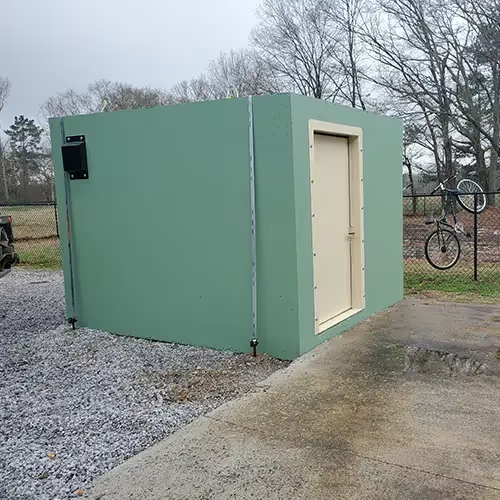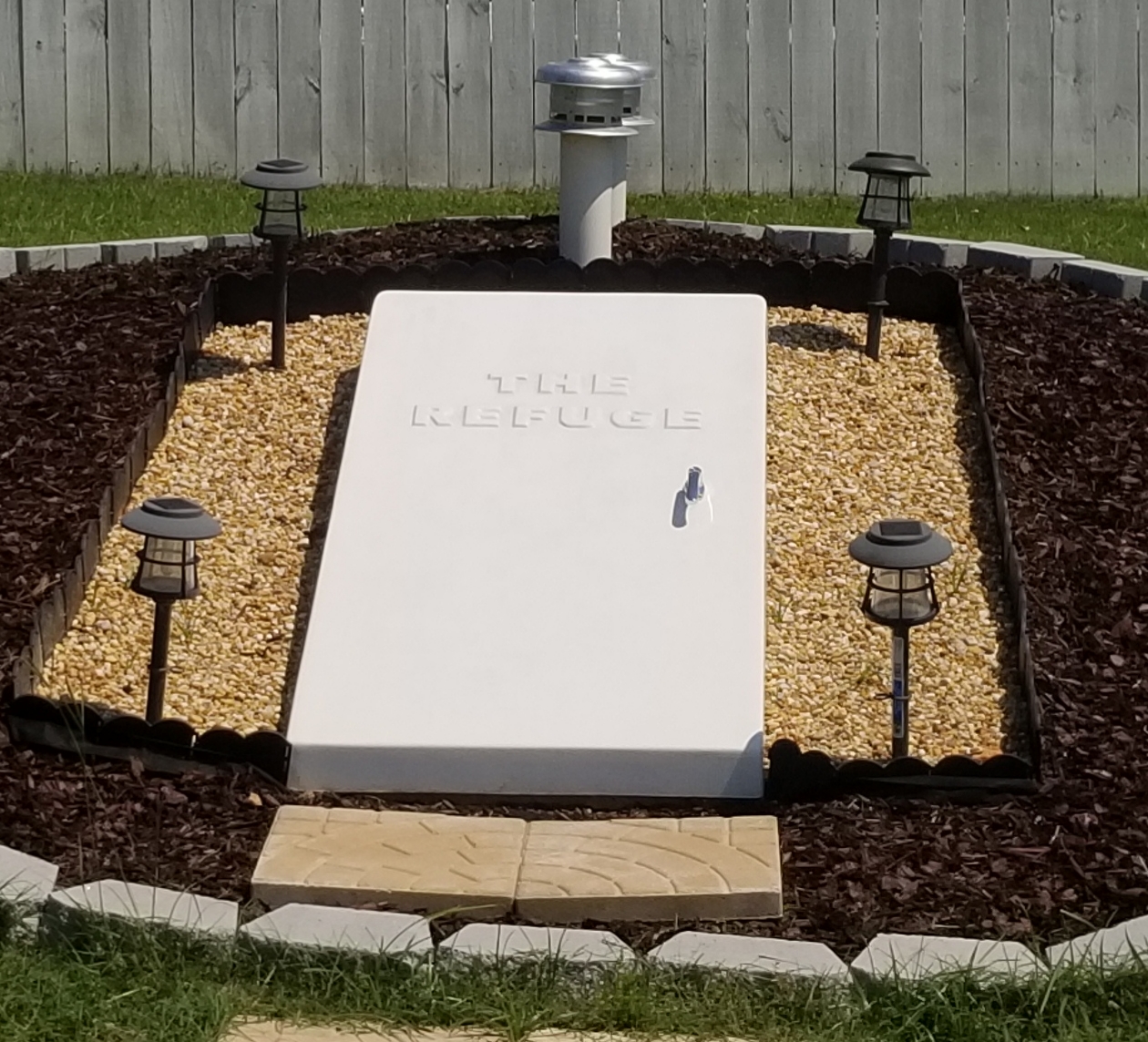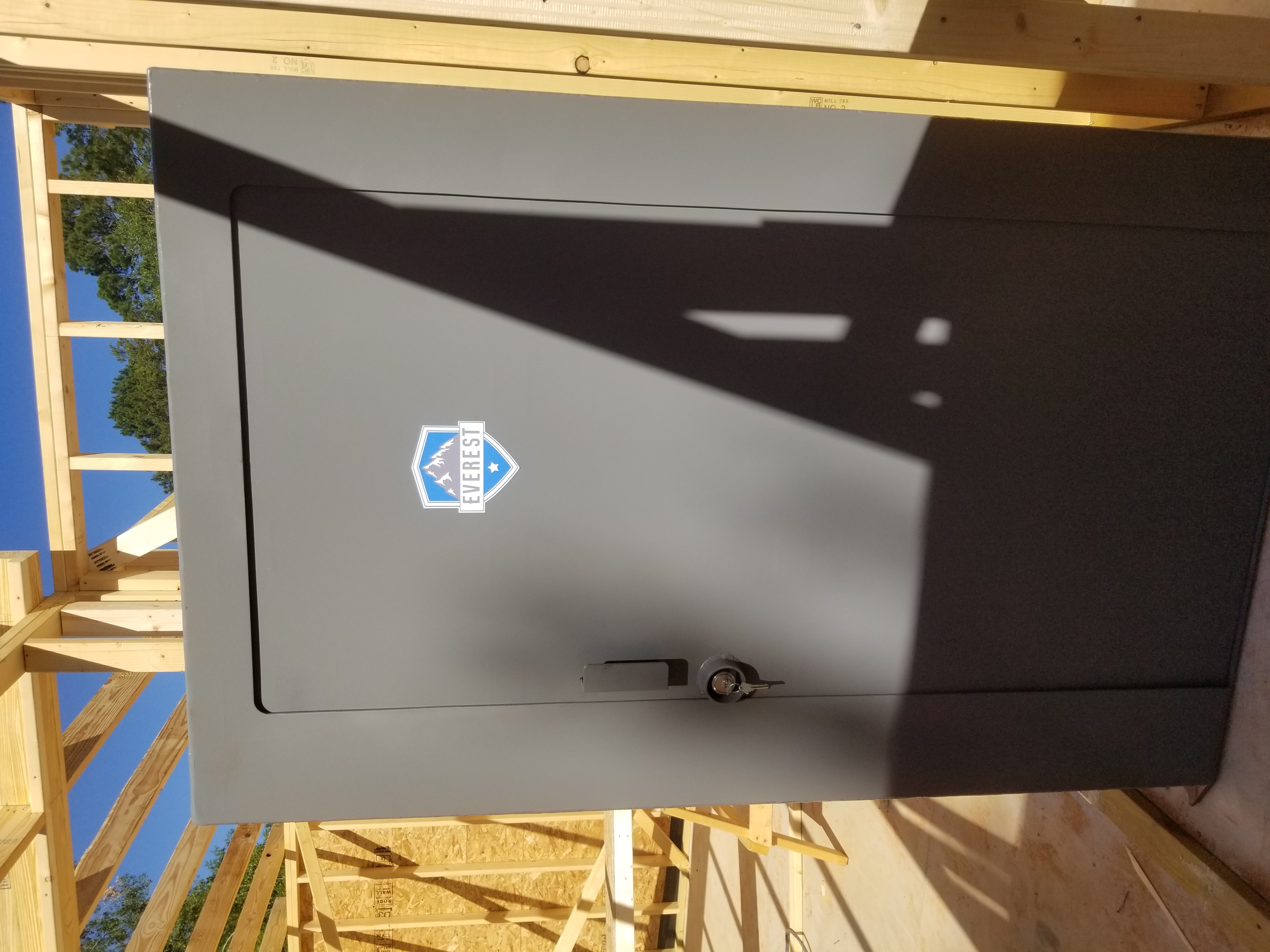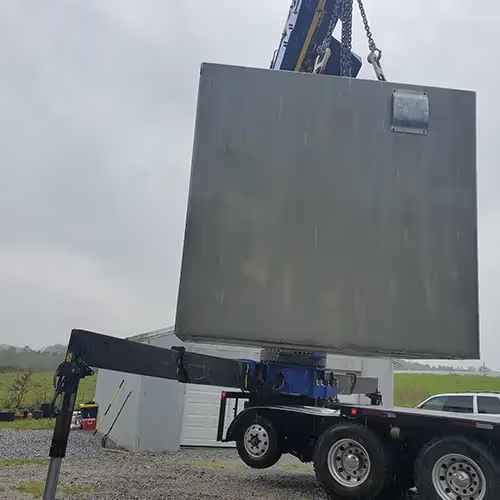Above Ground Tornado Shelter Requirements Homeowners Must Follow


When severe weather strikes, every second counts. Having a tornado shelter at home gives you peace of mind, but only if it’s built to meet proper safety requirements. Many homeowners don’t realize that even above ground tornado shelters must follow above ground tornado shelter standards, tornado safe room regulations, and residential storm shelter codes to ensure they can truly withstand the force of the storm. Tornadoes are unpredictable, and damage can be catastrophic if a shelter fails. If you’ve ever wondered what those tornado shelter safety guidelines are, or how they apply to your property, this guide will clarify everything.
This article covers essential rules, including FEMA tornado shelter compliance and above ground storm shelter permits, helping you understand what tornado shelter construction rules must be followed. You’ll also learn about home tornado protection laws, safe room building requirements, and the tornado shelter certification process, ensuring your shelter not only provides safety but also meets legal standards.
By following the residential shelter installation checklist and performing above ground safe room inspection steps, you can guarantee your shelter complies with tornado shelter accessibility standards. Factors like wind resistance requirements shelter and home storm shelter maintenance are equally important to ensure long-term performance. Proper preparation gives you the confidence that your family will remain protected during extreme weather events. By the end of this post, you’ll know how to plan, install, and maintain a fully compliant, safe, and reliable above ground tornado shelter that safeguards your loved ones and property.
Understanding Above Ground Tornado Shelters and Their Growing Importance
Tornado shelters have evolved significantly over the years, shifting from simple underground bunkers to advanced, above ground safe rooms designed to meet modern safety standards. Today, above ground tornado shelter design is guided by tornado shelter anchoring methods and tornado safe room ventilation, ensuring robust protection against high winds and flying debris. Traditional basements may not offer adequate protection in certain areas with high water tables or rocky terrain, which has increased the popularity of above ground solutions.
An above ground tornado shelter is a reinforced structure built either inside or adjacent to your home. These shelters comply with tornado shelter door standards, steel storm shelter regulations, and concrete tornado shelter codes to ensure maximum durability. Using proper tornado safety building materials and adherence to tornado safe room cost estimation practices allows homeowners to select reliable above ground tornado shelter suppliers or above ground storm shelter manufacturers.
These shelters meet residential storm shelter location rules and tornado shelter foundation requirements, guaranteeing emergency shelter certification and long-term compliance with state tornado shelter laws. Understanding above ground safe room specifications helps homeowners also secure residential tornado shelter insurance and tornado shelter warranty coverage, ensuring protection for both family and property. For those curious about building their own, check out this DIY above ground tornado shelters guide. Overall, knowledge of design, materials, and regulatory standards is crucial for building a shelter that is safe, reliable, and legally compliant.
Key Requirements for Building a Safe Above Ground Tornado Shelter
Building an above ground tornado shelter requires careful planning, attention to detail, and adherence to multiple safety and legal standards. Working with certified above ground storm shelter manufacturers ensures compliance with the tornado safe room approval process. A thorough home tornado shelter inspection checklist helps confirm structural integrity, proper occupancy capacity, and compliance with tornado shelter size requirements. Properly accounting for above ground shelter cost factors ensures your investment is both practical and affordable.
Structural integrity is critical. Use reinforced steel or concrete in compliance with steel storm shelter regulations and concrete tornado shelter codes. Anchoring must follow tornado shelter anchoring methods, while tornado shelter door standards and tornado safe room ventilation guarantee safety and usability. Additionally, the location should follow residential storm shelter location rules, comply with home tornado protection laws, and allow for safe, rapid access during storms.
Obtaining a tornado shelter installation permit and using a residential safe room inspection guide after construction confirms that all steps meet FEMA tornado shelter compliance and emergency shelter certification. Finally, checking tornado shelter resale requirements ensures your shelter adds long-term property value. Following these guidelines protects your family, reduces risk during severe weather, and provides peace of mind that your above ground tornado shelter meets all necessary safety and legal requirements.
Benefits of Installing an Above Ground Tornado Shelter
Above ground tornado shelters offer homeowners significant advantages beyond just safety. Located at or above ground level, they allow quick access during emergencies, making them a practical alternative to traditional basements. When built according to above ground tornado shelter standards and FEMA tornado shelter compliance, these structures are durable, reliable, and fully certified. Following steel storm shelter regulations, safe room building requirements, and tornado shelter construction rules ensures they can withstand extreme winds and flying debris.
Additional advantages include:
- Quick Access: Being above ground allows faster entry, saving valuable seconds in emergencies.
- Cost Efficiency: Reduced excavation and labor requirements, aligned with above ground shelter cost factors, lower installation expenses.
- Durability: Reinforced with tornado safety building materials for long-term resilience.
- Customizable: Designed to match above ground safe room specifications, integrating seamlessly with your home.
- Added Value: Compliant shelters enhance your property by meeting tornado shelter resale requirements and offering warranty and insurance protection.
Choosing certified above ground tornado shelter suppliers or above ground storm shelter manufacturers ensures that your investment is both safe and legally compliant. Additionally, proper ventilation, anchoring, and inspection steps guarantee long-term performance. For a closer look at installation options, see above ground tornado shelter safety. Overall, installing an above ground tornado shelter not only protects your family but adds a practical, valuable feature to your home.
Challenges and Considerations for Above Ground Tornado Shelters
While above ground tornado shelters offer numerous benefits, homeowners must account for potential challenges. Obtaining above ground storm shelter permits and complying with state tornado shelter laws can require extra time and attention. Ensuring accessibility in line with tornado shelter accessibility standards, proper ventilation according to tornado safe room ventilation, and door compliance per tornado shelter door standards is essential.
Regular home storm shelter maintenance and periodic above ground safe room inspection help ensure continued performance. Other considerations include limited interior space, higher visibility compared to underground shelters, and the potential need for cooling solutions. Each of these challenges can be mitigated by working with certified above ground tornado shelter suppliers, following tornado safe room approval process guidelines, and adhering to residential shelter installation checklist recommendations.
By understanding and planning for these limitations, homeowners can maximize both safety and comfort. Strategic placement following residential storm shelter location rules, combined with proper design per above ground safe room specifications, ensures compliance and effectiveness. Despite potential obstacles, careful planning and professional guidance make above ground tornado shelters a highly reliable solution for family protection.
How to Properly Install and Maintain Your Above Ground Tornado Shelter
Successful installation requires following a residential shelter installation checklist and working with certified above ground storm shelter manufacturers or above ground tornado shelter suppliers. Proper tornado shelter anchoring methods and adherence to wind resistance requirements shelter guarantee durability against extreme winds.
Key steps include:
- Assess Your Property: Choose a safe, accessible location following residential storm shelter location rules.
- Select Certified Shelter: Ensure compliance with FEMA tornado shelter compliance standards.
- Obtain Permits: Secure tornado shelter installation permit prior to construction.
- Hire Professionals: Work with experts experienced in above ground shelter installation.
- Plan Interior Layout: Include seating, storage, and tornado safe room ventilation for comfort.
- Install and Test: Use residential safe room inspection guide to confirm proper functionality.
- Regular Maintenance: Perform home storm shelter maintenance and periodic above ground safe room inspection.
Following these steps ensures your shelter meets emergency shelter certification requirements and provides long-term safety and protection for your family. For tips on choosing the right installer, see choosing the right tornado shelter installer.
The Future of Above Ground Tornado Shelters: Trends and Innovations
The future of tornado shelters will focus on smarter design, innovative materials, and compliance with updated tornado safe room regulations, residential storm shelter codes, and tornado shelter construction rules. Using sustainable tornado safety building materials and following above ground safe room specifications allows homeowners to maximize both safety and environmental responsibility.
Emerging trends include:
- Smart Shelters: IoT-enabled monitoring of structural integrity, air quality, and alerts.
- Eco-Friendly Materials: Sustainable steel and composite options for stronger, greener construction.
- Modular Designs: Expandable prefabricated shelters adapting to property and family size.
- Enhanced Safety Standards: Updated tornado safe room approval process ensures resilience against stronger tornadoes.
- Community-Based Shelters: Shared neighborhood shelters to increase accessibility in urban areas.
Homeowners and manufacturers alike must consider these innovations for future-ready shelters that meet evolving standards and provide maximum protection.
Key Takeaways and Next Steps for Above Ground Tornado Shelter Safety
- Follow above ground tornado shelter standards and tornado shelter safety guidelines.
- Secure FEMA tornado shelter compliance and a local tornado shelter installation permit.
- Maintain a home tornado shelter inspection checklist and conduct above ground safe room inspection regularly.
- Review residential tornado shelter insurance and tornado shelter warranty coverage.
By implementing these practices, your shelter remains compliant, safe, and ready to protect your family during severe weather events. Proper planning, installation, and maintenance transform an above ground tornado shelter into a long-term investment in safety, comfort, and peace of mind.
Final Thoughts and Continuing Your Tornado Shelter Journey
Above ground tornado shelters, when built to strict standards and maintained properly, provide unparalleled safety and confidence. Following above ground tornado shelter standards, tornado safe room regulations, and residential storm shelter codes ensures compliance, durability, and family protection. Regular maintenance, inspection, and adherence to FEMA tornado shelter compliance, tornado shelter certification process, and emergency shelter certification keep your shelter storm-ready for years.
Continue learning by exploring installation tools, discussing preparedness with family, and applying safety insights at home. By following these strategies, you ensure that your above ground tornado shelter is not just a precaution but a reliable, long-term safety solution.




